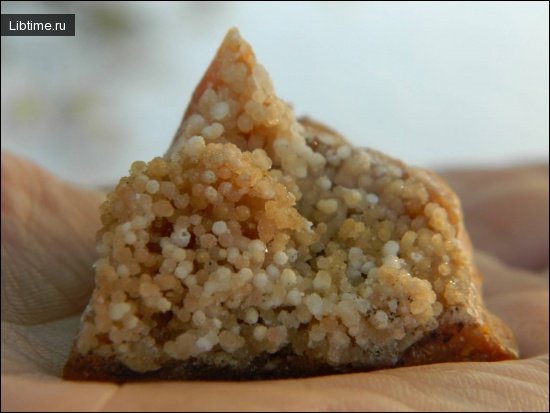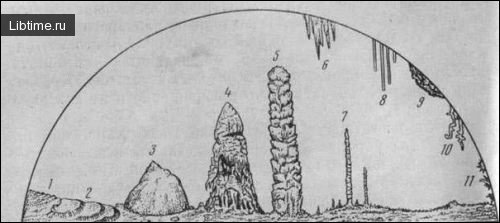People and caves
Caves and niches of various origins are widespread in many areas of the former Soviet Union, especially in mountainous areas.
Some of them are wind-blown in rock formations, others were formed in lava flows, and others were created as a result of the dissolving and dynamic activity of river, lake and sea waters. Caves are also found in the thickness of glaciers. 
The science of speleology
The study of caves is speleology (from the Latin word spelunca - cave). This name was proposed in 1890 by the French researcher E. Rivera. Rivera. Speleology as a complex science emerged and is developing at the junction of geographical and geological sciences.
It studies underground forms, processes determining the origin of caves, peculiarities of morphosculpture, cave sediments, microclimate, hydrology, vegetation and fauna of caves, as well as underground landscapes.
People and caves in ancient times
Caves have long attracted the attention of man. At the dawn of his life, caves were the first natural shelters in which ancient people took refuge from unfavorable environmental conditions.
Often caves were obtained by our distant ancestors after a persistent struggle with giant predators - cave lion, bear and hyena, who made their lair in them. Tools and household items of the Stone, Bronze and Iron Ages found in many caves show that prehistoric man used caves for a very long time.
This is where the first culture began to emerge. Later, when people learned to build dwellings, caves were no longer needed for this purpose. Now they rather aroused curiosity, beckoned by the unknown and at the same time created superstitious fear.
Few ventured into the cold and gloomy dungeon. Deadly terror enveloped the daredevil when the ominous silence of the cave was suddenly broken by the rumble of a fallen stone or the melodious slap of a drop.
The man left the cave in a cold sweat, having retained vivid and deep impressions of what he had seen and experienced. His ardent imagination drew amazing pictures, usually far from reality. So then formed legends and legends, often beautiful and poetic.
Rich human imagination populated the underworld with powerful and mysterious creatures who live surrounded by fabulous riches. And only those who have a pure heart, unselfishness, courage and boundless love for people can get them.
Sacred caves
Many peoples considered caves sacred. At the entrance to them were arranged prayer rooms.
Rich gifts were brought to the "master of the cave" - household items, food, copper and silver money. Sometimes blood sacrifices were arranged in honor of the "spirit" of the cave. 
Karst caves were formed as a result of long centuries of dissolution of carbonate and halogen rocks by waters circulating through the cracks of these deposits. Subjected to leaching and the mechanical action of the waters, the limestones and gypsums gradually erode, and small, inconspicuous cracks become underground cavities.
As the cave develops, large grotto-halls are formed in it, connected by narrow and wide passages, often located at different hypsometric levels.
But water not only builds magnificent underground palaces and giant cavities, sometimes found at great depths from the surface, it is also a wonderful sculptor.
Water decorates underground halls with fanciful calcite, salt and ice columns, candelabras, stone fountains, heavy draperies, transparent curtains, delicate gypsum flowers, crystals and other formations that make grottoes and galleries fabulously beautiful.
Sometimes calcite deposits form tiered curtains that create a complete illusion of the frozen northern lights. Especially interesting are cave pearls, which have the same chemical composition as real pearls.
In the dual activity of natural waters - the continuous destruction of rocks and the creation of underground cavities, as well as the accumulation of dissolved matter elsewhere - is the essence of the karst process.
Karst processes and the karst forms formed by them are most widely developed on the limestone plateau Karst (Kras) in Slovenia (Yugoslavia), from where they got their name.


